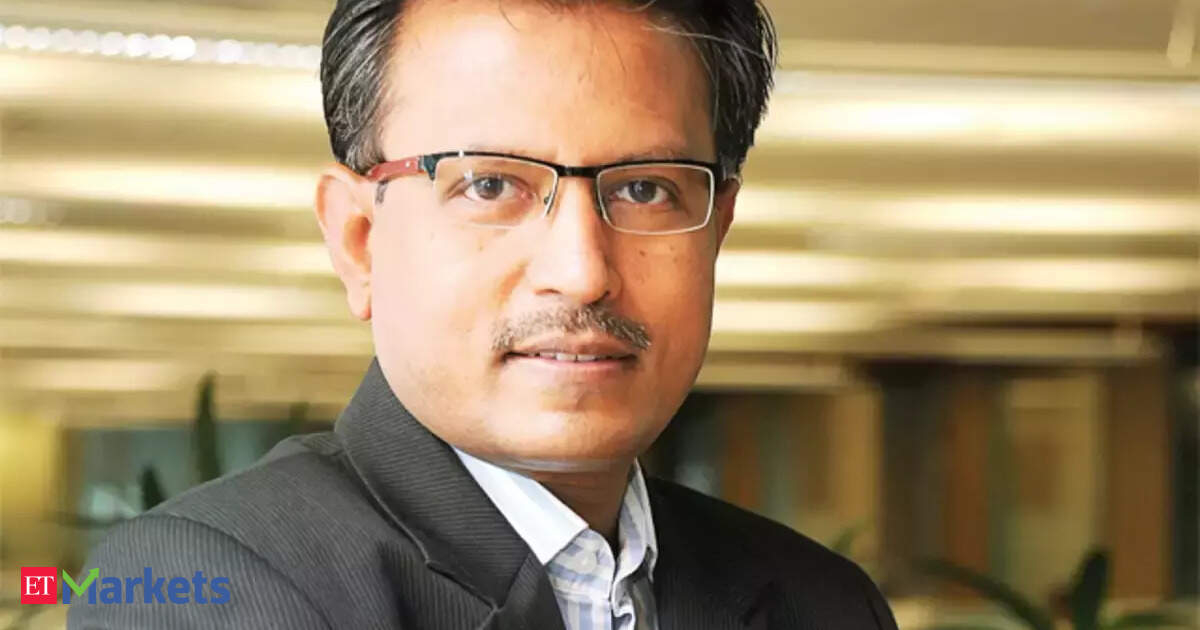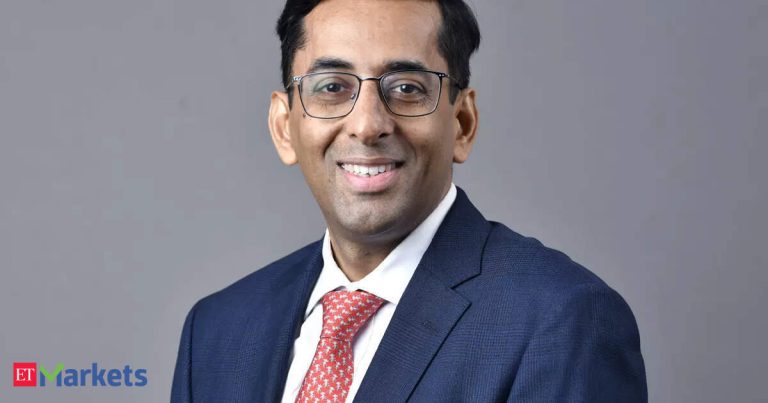In a conversation with Kshitij Anand, Shah highlights why long-term investing, disciplined SIPs, and sound asset allocation remain the true engines of wealth creation — not chasing quick wins or FOMO trades.
Whether you’re a first-time investor or a seasoned market participant, this conversation is packed with insights to help you focus on what really matters: patience, discipline, and building your financial innings like a Test match. Edited Excerpts –
Kshitij Anand: In a world of 30-second reels and 10-minute market trends, is the idea of 10-year investing just too vintage?
Nilesh Shah: Undoubtedly, most people want instant gratification, even if it leads to disaster. Just like drug addicts seek short-term highs while inflicting long-term damage, there are quick-money addicts who chase short-term gains at the cost of long-term pain. So, while 10-second reels are popular, 10-year investing isn’t — even though that’s the only real way to build wealth.
Kshitij Anand: You always talk about asset allocation, but what does that actually mean for someone just starting out with limited savings and a lot of financial FOMO?
Nilesh Shah: Asset allocation, in very simple terms, is like what you do for your physical health. Most of us like sweets and farsan, but we don’t make them our staple diet. Our staple diet still remains dal, roti, chawal, and sabji, which provide us physical health. Similarly, in financial health, you create a portfolio of debt, equity, gold, and real estate so that, overall, it outperforms inflation.
How to Build Wealth with SIPs: Nilesh Shah Shares ‘The Golden Thumb Rule’ | Episode 2

In Episode 2 of The Golden Thumb Rule, Kotak Mahindra AMC’s MD, Nilesh Shah, explains how to build long-term wealth with SIPs, discipline, and patience, even in volatile markets. Drawing on cricket and chess analogies, Nilesh Shah reveals why investing is like a test match, not T20, and how SIPs can become India’s version of the 401(k). Learn how to master emotions, avoid common mistakes, and stick to your plan to beat the noise and create real wealth. Watch now to discover the golden rule of investing that works in any market.
Kshitij Anand: I’ll also bring in cricket here, since I know you’re a big fan. We recently saw two centuries from Shubman Gill. Let’s compare cricket and the equity markets. You often compare investing to cricket, and every cricketer has a favourite shot. What’s your favourite investment strategy — SIPs, asset allocation, or value buying?
Nilesh Shah: Before cricket, I want to mention chess. Recently, Magnus Carlsen said Gukesh is a weak player and that he didn’t take him seriously. Gukesh not only defeated him but went on to win the Rapid Chess Tournament. This is how the world treats India. They say we don’t matter — that we are a poor, developing country. But like Gukesh defeated Magnus Carlsen’s ego, India and the Indian equity market will overcome the skepticism of global investors. We just need to keep working hard.Now, coming to cricket — there’s T20, One Day, and Test matches. The real joy of playing is in Test matches. You take your time, build your innings, and play even on the fifth-day pitch. My favourite cricketing shot is the Test match format — where you build your innings and play for the long term. T20 is exciting, like trading — sometimes up, sometimes down — but real long-term wealth is created in the Test match format.Kshitij Anand: Now, I also wanted your thoughts on SIPs. SIPs are seen as the OG financial advice right now. But in a volatile market, is it smart to increase SIPs, pause them, or just stay the course? I ask this because we’re clocking over ₹27,000 crore monthly via SIPs. Especially for new investors, what should they be doing at this point?
Nilesh Shah: Like we have SIPs, the US has something like the 401(k). I’ve never seen any American guru or fund manager telling their citizens to stop investing in their 401(k) plans. Month after month, it keeps getting invested, and that’s built America’s wealth. Today, half of American household wealth is invested in capital markets.
Can we replicate the 401(k) model in India? Unfortunately, our government leaned towards provident funds, the National Pension Scheme, and so on. Mutual funds stepped in to fill that gap. And today, we have many successful SIP investors.
Of course, they’ve faced pain. In March 2020, their portfolios were down 30%, 40%, even 50%. Three-year SIP returns were negative. Five-year SIP returns were lower than savings account returns. Ten-year SIP returns were lower than fixed deposits. At that time, there were three kinds of investors:
One group said, ‘let it run,’ and they’re now making double-digit returns, outperforming inflation, and building real wealth.
The second group panicked when returns turned negative. They converted notional losses into real losses by redeeming and stopping their SIPs. Today, they regret it because they missed the opportunity to make money.
The third group — a small one — was the real smart money. They said, ‘This is the opportunity. SIP returns are negative, so let’s invest lump sums or top up our SIPs.’ Today, they’ve made even higher returns than regular investors.
Like the 401(k), SIP is the solution for financial security in India. While American households have invested half their wealth in capital markets, Indian households are still in single digits. We have a long way to go to secure every Indian’s financial future.
SIP is a very simple concept. There will be SIP top-ups, SIPs in multi-asset allocations, and more innovations over time. But first, you have to put the car in first gear before it can move forward.
Kshitij Anand: And in fact, staying with the topic, let me also get your view — when markets are booming or crashing, it’s so tempting to panic-sell or FOMO-buy. How can young investors avoid these classic emotional slip-ups? We’ve seen these situations play out in the past few months, where markets dipped suddenly and then bounced back just as fast.
Nilesh Shah: First of all, we need to be aware that we are human beings — we will naturally feel greed as well as fear. We are not some nirvana-prapt sadhus immune to these emotions. Being aware that I can be greedy or fearful is the first step in finding a solution. SIP is something very, very simple. Another approach is — when you invest, write down why you’re investing. A friend of mine, a mutual fund distributor, makes all his clients write down their reasons for investing. Someone might write, “daughter’s education”; someone else might say, “to support my son’s business”; another person might say, “my retirement.” When markets fall, returns turn negative, and investors feel fearful, his immediate response is: “Do you need your retirement corpus today? Do you need to pay for your daughter’s education today? No? Then continue. These tough days will pass.”
So, we all have to figure out a way. My best advice would be: please find a hand-holder — a mutual fund distributor or a registered investment advisor — who can guide you through these tough times.
Kshitij Anand: In fact, the analogy you’ve given is something investors can take note of and implement in their portfolios as well. And talking about portfolios — tell me something: is Gen-Z really building portfolios, or just building Pinterest boards of things they can’t afford yet? What does the data say?
Nilesh Shah: So again, in India, our population is so large that every rule has an exception — and that exception itself is fairly large. I’ve met some very, very smart Gen-Z investors. They know more about companies than I do. Honestly, I feel ashamed of my knowledge in front of them! They will become legendary investors over time. They use technology to analyse data and process information much faster than we old-school folks do. They are much better than us, even after our 30 years of experience in this field.
On the other hand, I’ve also met Gen-Z individuals who have no idea what they’re doing. They get influenced by social media. They believe every tip that comes on WhatsApp or Telegram will make them rich. Many of them are so gullible that they believe AI-generated deepfake videos of people like us are real.
So, my request to Gen-Z investors, traders, and speculators is this: one — instead of trading, focus on investing; two — please do a little bit of research. And if you don’t have the time or energy for it, consult a good mutual fund distributor or registered investment advisor who can help you build your portfolio.
Kshitij Anand: Good that you’ve brought up social media because my next question is about that — how much of young investors’ money mindset is shaped by Instagram influencers, versus real financial education?
Nilesh Shah: Here, we have a long distance to cover. Firstly, the next generation is far more confident about the future. For me, taking a housing loan was a huge decision. My daughters, if they have to borrow money to spend, I’m sure they’ll act much faster.
Secondly, because they feel secure about their future, in some sense, they’ve become a little careless about money. Many live off credit cards — not a good habit. Many believe in instant gratification — again, not the best way to invest. Many blindly copy what they hear in the digital ecosystem.
Now, please remember — apart from your parents, no one is truly interested in your well-being. This mix of emotions and overconfidence isn’t necessarily creating the best outcomes. Many young investors are learning only after making mistakes. My request to them is: please learn from others’ mistakes. Why make your own mistakes when you can learn from someone else’s?
Kshitij Anand: My next question is related — if you could give just one piece of advice to someone making their first investment decision, what would it be?
Nilesh Shah: My advice would be: start with SIP. Legendary opening batsman Sunil Gavaskar always began his innings by playing in the ‘V’ — between mid-on and mid-off. Once his eyes were set, he played other shots. Similarly, when you’re new to investing, your eyes aren’t yet set — the market is like a swinging ball. So, play in the ‘V’ — which is SIP. Learn how SIP returns fluctuate. Learn how topping up your SIP when returns are negative can deliver better returns. Over time, you’ll get a feel for how markets work. Once your eyes are set, you can start playing other shots.
Kshitij Anand: And in fact, we talked about young investors, but there are seasoned investors as well who have been in the markets for quite some time. You’ve been a market veteran with decades of experience. According to you, or from what you’ve seen, what is one mistake even seasoned investors still make that we should watch out for early on?
Nilesh Shah: I would say, whatever we preach, we should practice. But being human beings, we’re also driven by our own greed and fear. Keeping that equilibrium is most important. We fall in love with our investee companies, and then ego sets in — “How can I be wrong? The entire market is wrong, not me.” We stop understanding what our investee company is doing. By the time we wake up, it’s too late. You have to control your ego.
There’s a proverb that says: Abhiman toh Raja Ravan nupan nahi takhyo. Ravan was the king of Lanka, a city made of gold. He was immensely powerful and knowledgeable, yet his ego blinded him and led to his ruin. Ego, ego, and ego. As a fund manager, we have to control that.
Kshitij Anand: We’ve all seen batting collapses in cricket. How can investors build a portfolio that doesn’t collapse under pressure? I know it’s a far-fetched comparison, but still wanted to put that to you.
Nilesh Shah: My favourite example here is Kapil Dev’s mindset. We had won the Champions of Champions trophy and then went to Sharjah. Against Pakistan, our arch-enemy, we got bundled out for 123 runs. Everyone was dejected. The world champions were staring at defeat. Things couldn’t have looked worse. Everyone went into the lunchroom apparently, and no one was talking to each other — everyone was down.
As they were stepping out, Kapil Dev simply said, “Chalo, dekh lete hain,” or something like that. The whole team went out with that desire to prove they weren’t fluke world champions — they were Champions of Champions. Each one gave their best. Mohinder Amarnath made that brilliant run-out, Laxman Sivaramakrishnan bowled brilliantly, and the whole team came together. We bundled out Pakistan for 83.
So, whenever you are at 123, staring at defeat, think of Kapil Dev’s advice: Dekh lenge. Jo bhi ho, ho jaayega. Dekh lenge. As we say at Kotak Group — Hausla hoga toh ho jaayega.
(Disclaimer: Recommendations, suggestions, views, and opinions given by experts are their own. These do not represent the views of the Economic Times)








